I visited Bivacco Latemar and Bivaco Rigatti in the Dolomites on my long day tour, and here you have my detailed report about the trip.
Bivacco Latemar (bivouac Attilio Sieff) and Bivacco Rigatti can be visited from the tiny village Forno in Val di Fiemme, which is on the main road below Moena in the south-west direction. A free parking with places for two cars only is at the end of a short street that continues into Valsorda valley.
Plan around 3 hours and 30 minutes from the parking to Latemar bivouac, and another 70 minutes to Bivacco Rigatti.
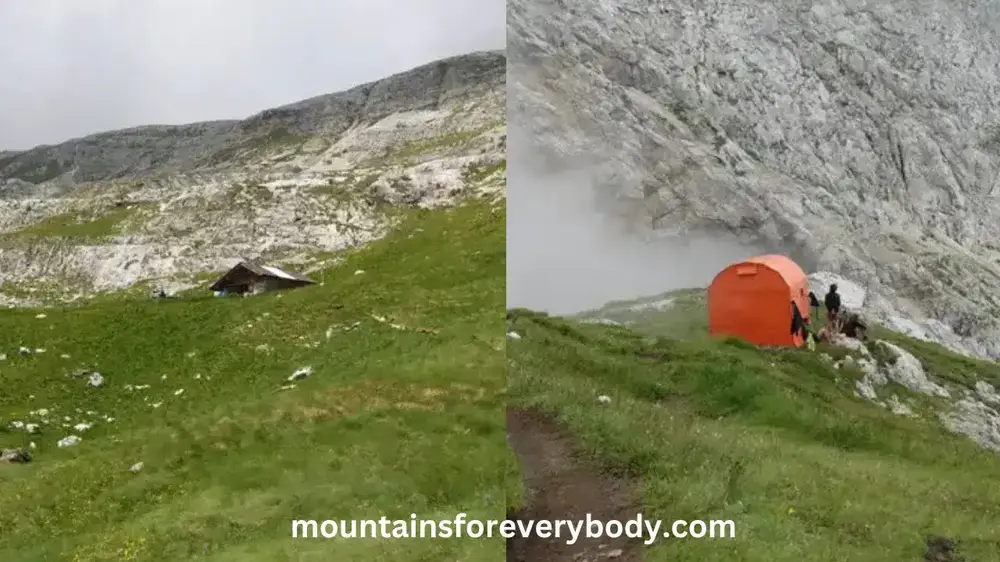
Coordinates, numbers & details
- Bivacco Latemar coordinates: 46.37462 N; 11.570696 E.
- Elevation: 2365 m (7759 ft).
- Bivacco Rigatti coordinates: 46.3816244 N, 11.5803586 E.
- Elevation: 2520 m (8268 ft).
- Normal route difficulty: walk up.
- Useful map: Tabacco number 06, Val di Fassa e Dolomiti Fassane, 1:25000.
- Free parking at Forno 1168 m (5446 ft).
- Parking coordinates: 46.3504228 N, 11.6266106 E.
Access roads & location
The interactive map below shows all access roads and also hiking and mountaineering routes in the area. The marker 1 gives the position of the parking in Forno.
The markers 2 and 3 show the positions of the Latemar bivouac and Rigatti bivouac, respectively. Please zoom in to see the details on the route.
Route description
From Forno to Bivacco Latemar
The picture below shows my view back after parking the car. There are only two places there, so if you cannot park, try in the center of the village below, there is a free parking with a few more places.
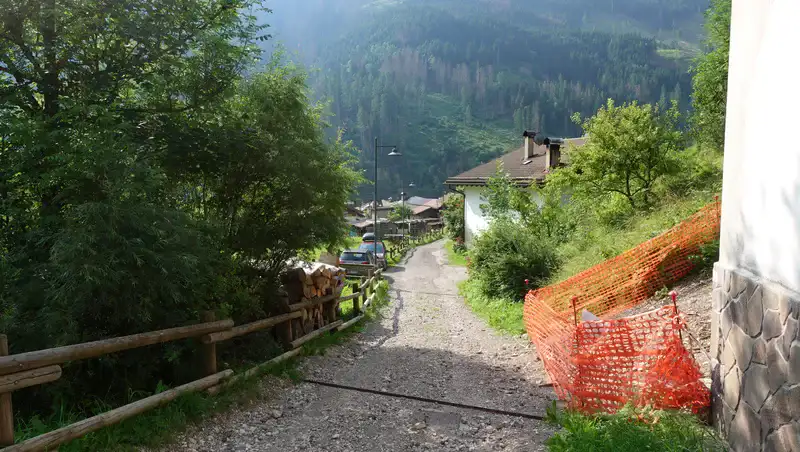
Very soon you are in the narrow gorge with a noisy water flow next to you, see the picture. In the case of rain you will be wet from the plants around.

After some walk the valley becomes much wider and you will see steep cliffs at the end of the valley, this is Lastei Valsorda. The bad news here – this is your direction. Bivacco Latemar is on a grass plateau on the top of these cliffs.
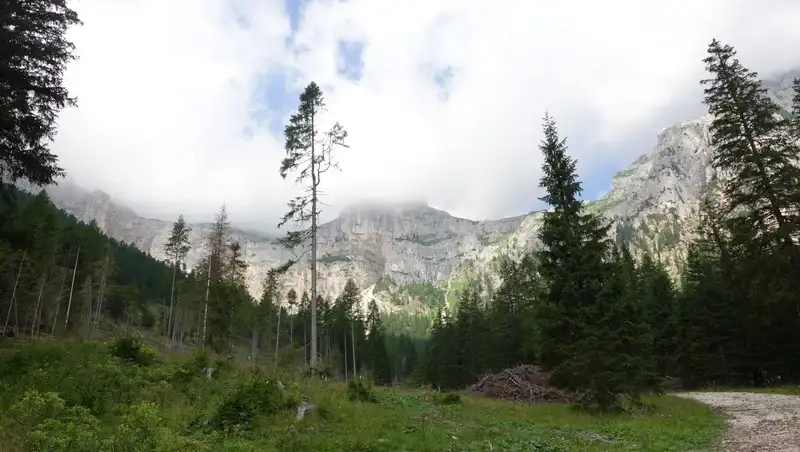
At some point in the forest, you will pass the place where you will see wood prepared for fire, the picture below. It is there for you, so if you plan to sleep in the Latemar bivouac, you will want to carry some wood up the cliffs. It is unlikely that you will have it available at the shelter.
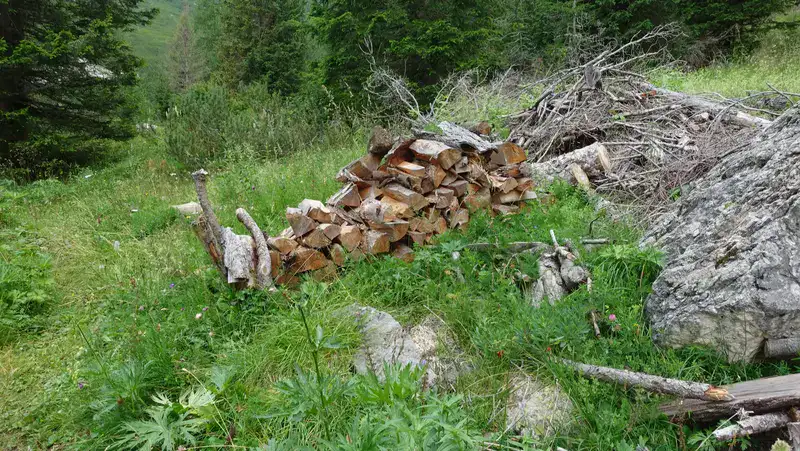
But elevation at that point is only around 1800 meters, and there is the steepest part waiting for you:
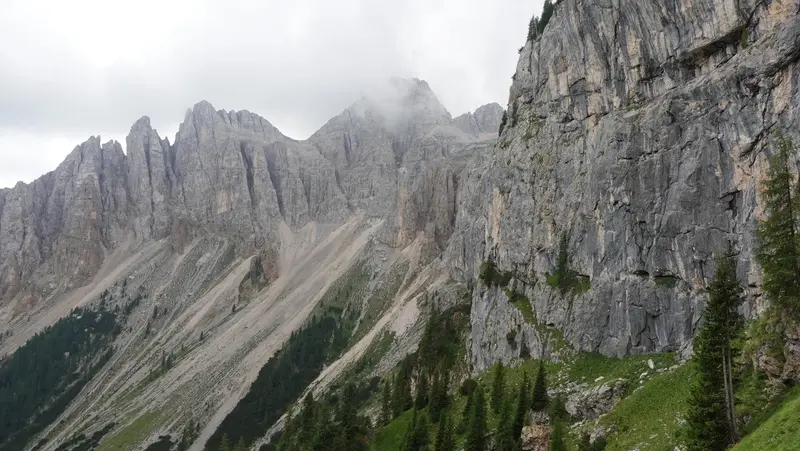
There is an easy passage here with fixed cables, the only on the route, but you do not need any equipment:
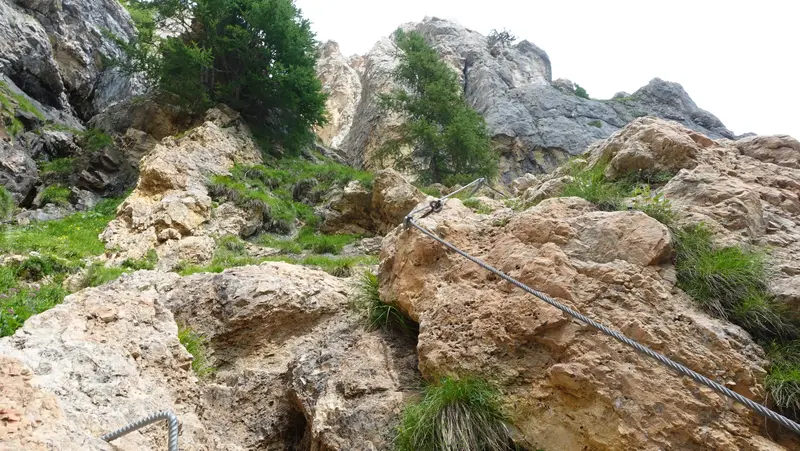
Once you are above the tree line, you will have Valsorda below you, see how it looked when I was there. Val di Fiemme and the main road are far below.
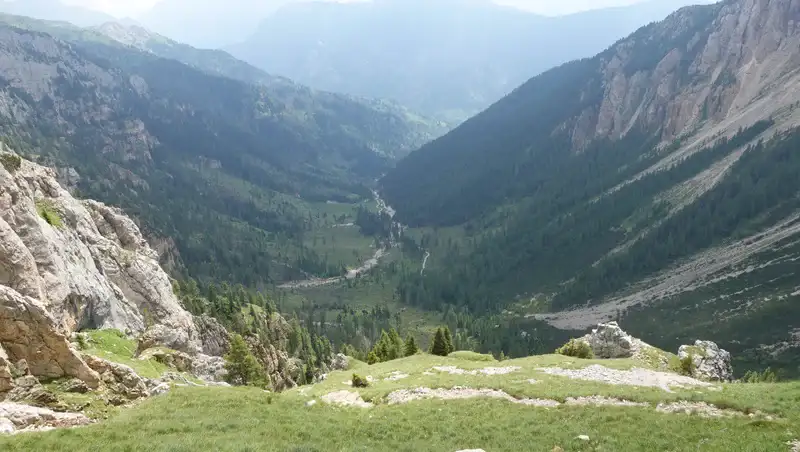
You will not see the shelter until you are very close to it. But the sign for water (shown below) will tell you that the bivacco is close. This is the place where you can refill so make sure you do so, there is no water anywhere higher on the route.
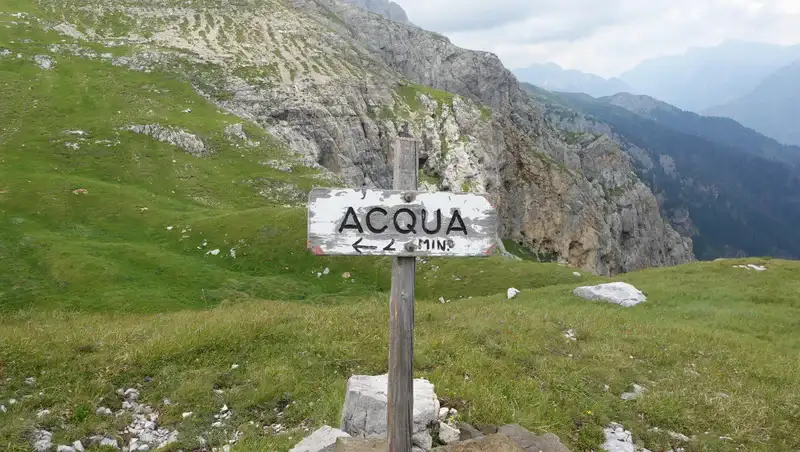
Bivacco Latemar is soon in sight, the picture below shows how it appeared in front of me.
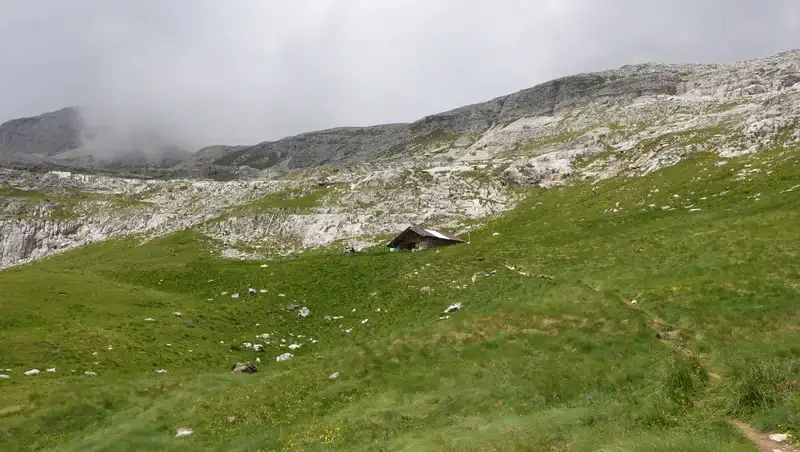
This a wood cabin, with a wood burning stove inside, and it is equipped with mattresses and blankets. There are 6 beds on the ground level, plus some more mattresses in the attic. Below is my view inside.
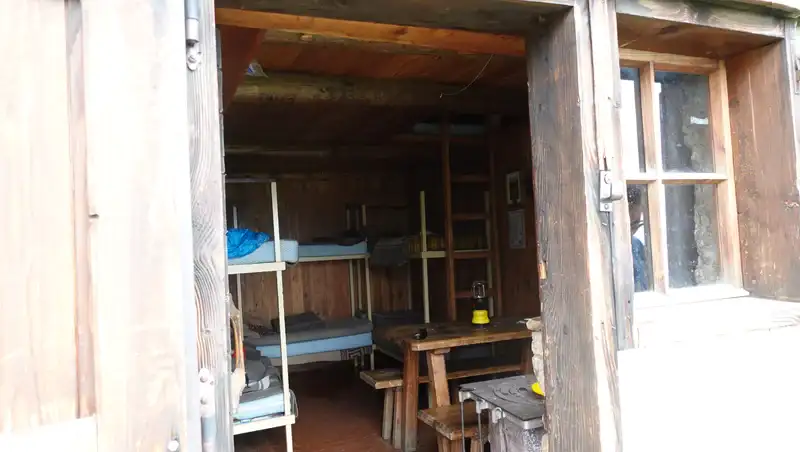
There are many signs at the shelter, so if you plan to continue to Bivacco Rigatti, you will follow the direction to Forcella dei Campanili. Please consult also the map given above.
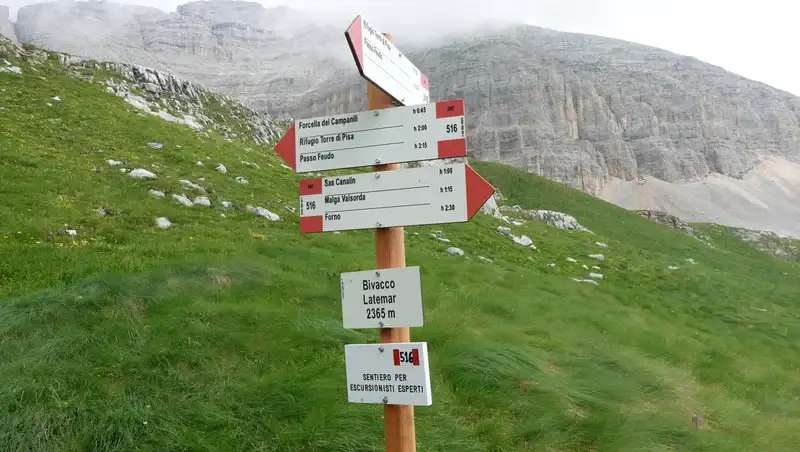
From Bivacco Latemar to Bivacco Rigatti
The route from here is still on grass, but very soon this will be pure rock. Below you can see Forcella dei Campanili, this pass is your direction but you do not have to go all the way up to it.
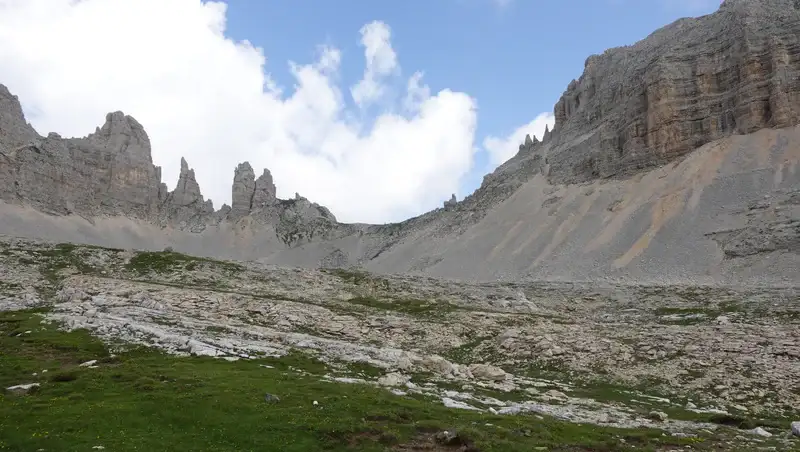
Namely, when you are below the pass, you make a U-turn to the right to the gravel area in the picture, into south-east direction, and switch to the route to Rigatti bivouac.
The remaining route is flat and it goes along beautiful ledges like the one shown below. Views are excellent, but exposure is minimal, there are no really dangerous passages here.
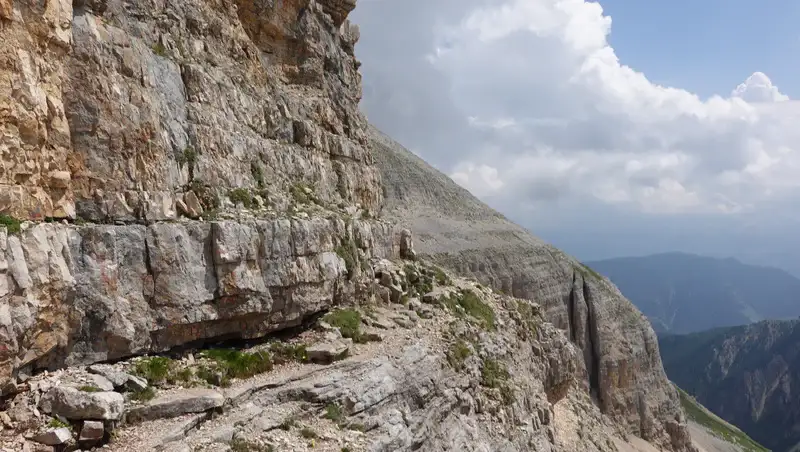
In fact, after a long walk over the ledges, you will have Bivacco Latemar directly below you, I have marked it with the red arrow in the picture:

You continue walking more or less horizontally, and the picture below shows view back over the route you have walked:
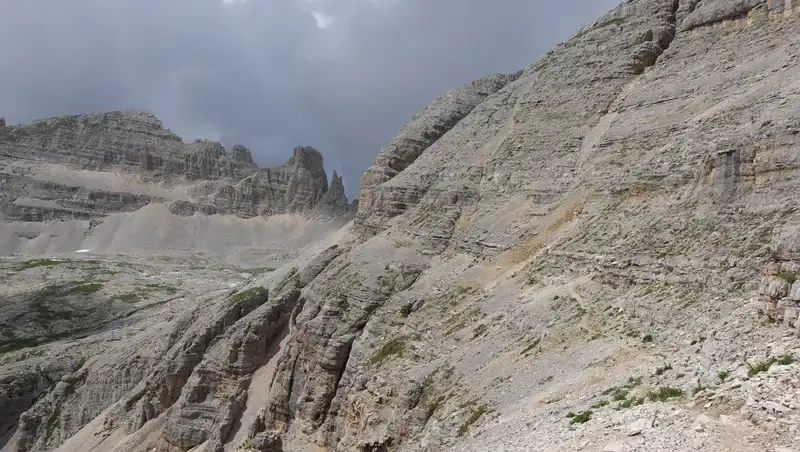
Eventually, the route will make yet another U-turn but this time to the left, in the north-east direction, and at some point you will have the first view of Bivacco Rigatti. It is a tiny red dot on the saddle in the picture, this is Forcella Grande del Latemar.
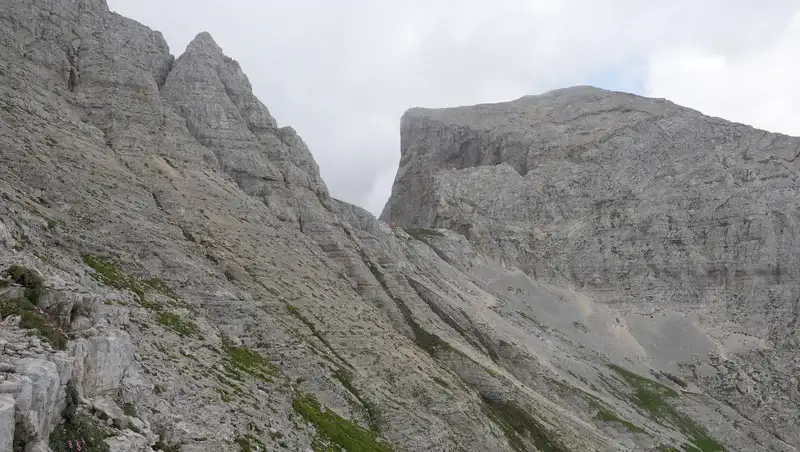
When you get closer, you realize that this is a shelter very different from Bivacco Latemar. Here you have a very typical alpinist metal container with 9 beds and all mattresses and blankets needed:
My tour
I arrived from Passo Sella, parked at 9:20 AM and started walking. There were no people around, and I was not in rush.
This was supposed to be a long day tour, I did not plan to sleep in the shelters. The only reason was that I was not in a mood to carry my sleeping equipment. It turned out that both bivouacs were full, so this was in fact a good decision.
I have wasted a bit of time on picking raspberries and strawberries, there were plenty of them on the lower part of the route. Namely, the route starts at low elevation, and this is why there were so many of them around.
I arrived at Latemar bivouac at 12:40, so this means it took me 3 hours and 20 minutes. There was a group of Italian people at the shelter. After a short rest and breakfast, at 1:05 PM I continued up to Rigatti shelter.
When I was at the rocky plateau above, I could see a few groups, some were moving in the direction of Rifugio Torre di Pisa. Yet another group was much higher above Forcella dei Campanili, and they were taking the ferrata route to Rigatti.
There were also a few other people walking in some unknown directions. In other words, the plateau was crowded, and this was surprising because I have not seen anybody in the lower part of the route.
I followed the normal route along the ledges and arrived at Rigatti bivouac at 2:10 PM, so it took me around 65 minutes from the lower bivouac.
There were four Italians there, and they told me they would sleep there. But there was also a larger group coming from the ferrata route above, so the place was going to be very crowded overnight.
On my way back I met two women going there, I told them about people, and they said they would sleep under the stars. I was impressed.
I did not stay long at the bivacco, and descended the same way back. Later on the plateau I met two young men, they were also going in the same direction but with their own tent.
I arrived to Latemar shelter again, the picture below is from my way back, and took a long rest talking to two kind Italian men.
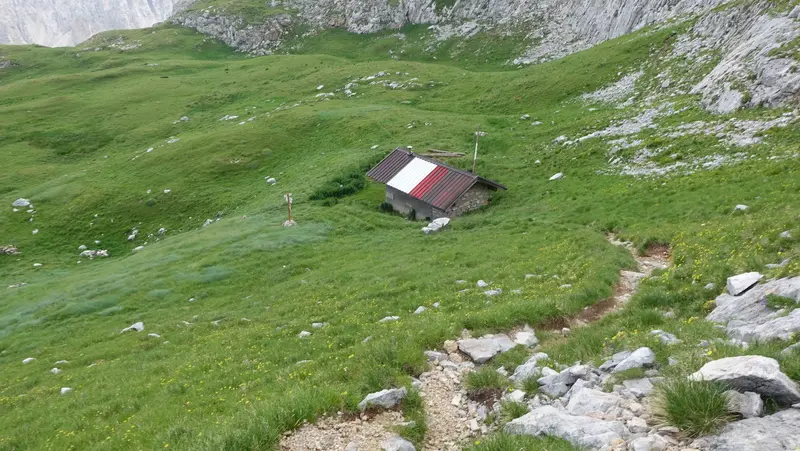
The younger of the two was impressed by the fact that I was a theoretical physicist, he said he had never had a chance to meet such a rare animal. He was very eager to discuss black holes and other exotic objects, and we had a pleasant conversation at a high level (in terms of elevation that is).
The other Italian was actually living in Nicaragua, and he was in the mountains on vacations. I had plenty of questions about his life there where he had a BB business based on the permaculture. And he also had an incredible backpack from Zpacks, I could not admire it enough.
Later a few more people arrived, and it was clear that even that bivouac would also be crowded.
But I was already too late, so I had to move and descended the same way back. After getting to the car, I left the Dolomites, and arrived at Passo Tonale very late in the evening. I slept there in the car before continuing to Livigno next day.
All in all, that was a really beautiful day, I visited two great bivouacs and met a few very interesting people in both of them and on the route. Almost all of them were Italians, and this is quite different from the rest of the Dolomites that are crowded by tourists from all over the world.
The weather was not really perfect, you realize this from the photos, but it was stable and without rain.
You can see more about the tour in my video:
Equipment, supplies & accommodation
For this tour I used my Osprey Stratos 24 backpack, so just follow the link to read my full review. The boots were a pair of Nortiv 8, perfectly good for such a tour.
I also had a full rain protection set, and this includes a poncho, rain pants, and a rain jacket. A pair of trekking poles were also with me.
Regarding water, I already mentioned, a very good source is close to the first bivouac. Food you have to carry with you, so visit some shops in the main valley below.
As for accommodation, there is a camp in Canazei.
Final thoughts
In conclusion, visiting Bivacco Latemar and Bivacco Rigatti in the Dolomites offers a rewarding experience for those seeking adventure, stunning landscapes, and a glimpse into the local mountaineering culture.
The route from Forno to Bivacco Latemar involves a challenging ascent through the Valsorda valley, complete with steep cliffs and fixed cables, but the view and tranquility at the top make the effort worthwhile.
Bivacco Latemar provides a rustic yet cozy shelter for hikers, while the subsequent route to Bivacco Rigatti introduces a more exposed, rocky terrain with breathtaking panoramic views across the surrounding mountains.
Both bivouacs offer a unique contrast in their design and atmosphere. Bivacco Latemar, a wooden cabin with basic amenities, feels more traditional, while Bivacco Rigatti, a metal container with alpinist essentials, reflects a more modern and minimalist approach to mountain sheltering.
Throughout the journey, the scenic beauty of the Dolomites is ever-present, from the lush greenery at lower altitudes to the rocky, dramatic plateaus higher up.
The trip between these two bivouacs not only presents a memorable hiking adventure but also provides a chance to meet fellow hikers and enjoy the serenity of the mountains, making it a highly recommended experience for outdoor enthusiasts.
Please join us at our Facebook group Dolomites Visitors Hub. Subscribe to my weakly newsletter and stay informed, the subscription form is given below.
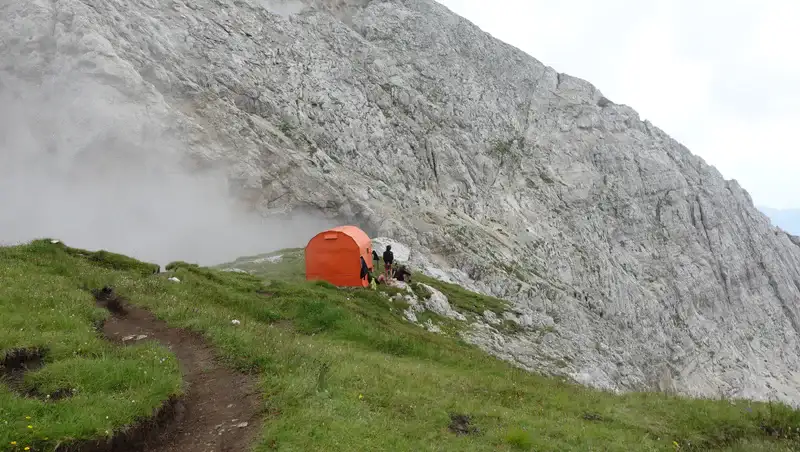
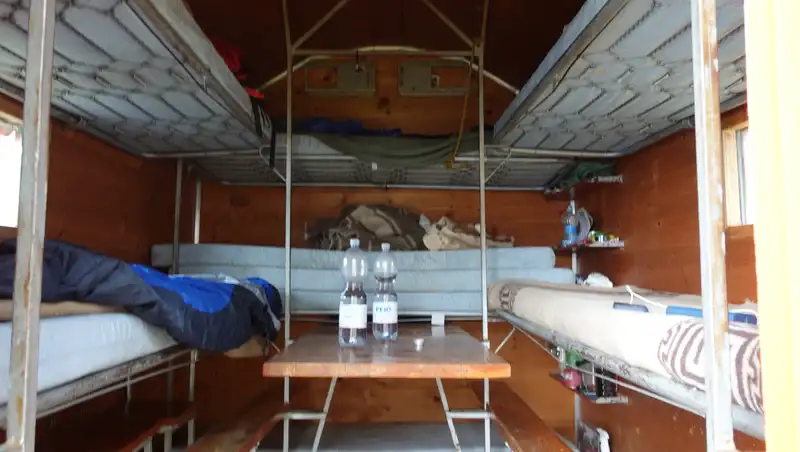
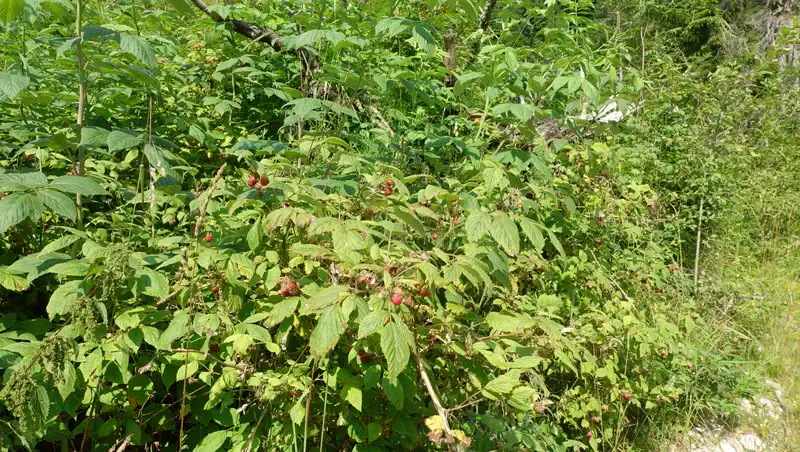
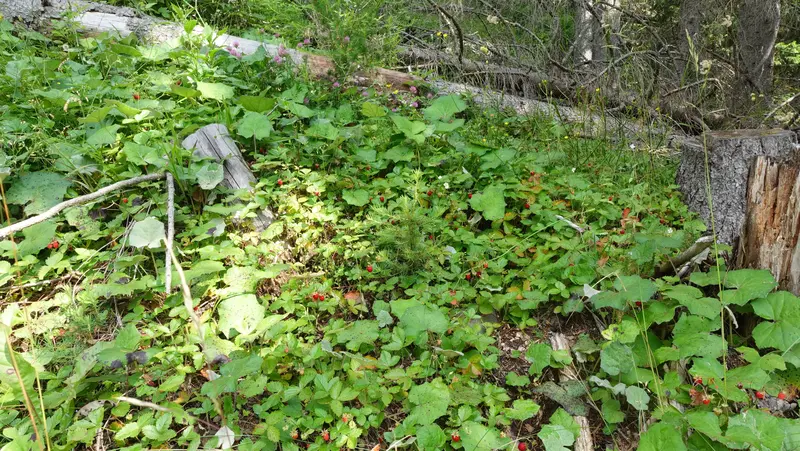
Leave a Reply